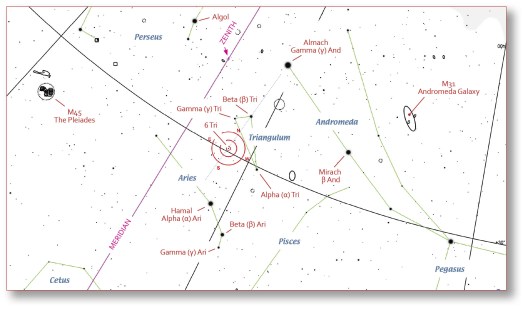Check out the new video on the constellation Orion—including how to recognize it, where and when to look for it, and some good targets there. The eight-minute video then shows how to use Orion as a springboard for finding other constellations surrounding it, making this part of the night sky easy to learn!
Orion is a great landmark for beginners learning their way around the night sky, because its main stars are so bright and the pattern they make is so distinct. The famous Great Orion Nebula, Messier 42 (M42), is here too—along with double stars, you could spend an evening with a telescope in Orion alone!
In North America, Europe and and Central Asia, Orion is visible high in the south around 9 PM in January and February. It’s also visible in the same part of the sky around 8 PM in March, and low in the west after twilight in April. (The constellation then disappears into the Sun’s glare until late summer, when it reappears in the eastern sky just before dawn in August, around 3 AM in September, 1 AM in October, 11 PM in November, and so forth, starting the yearly cycle anew.)



